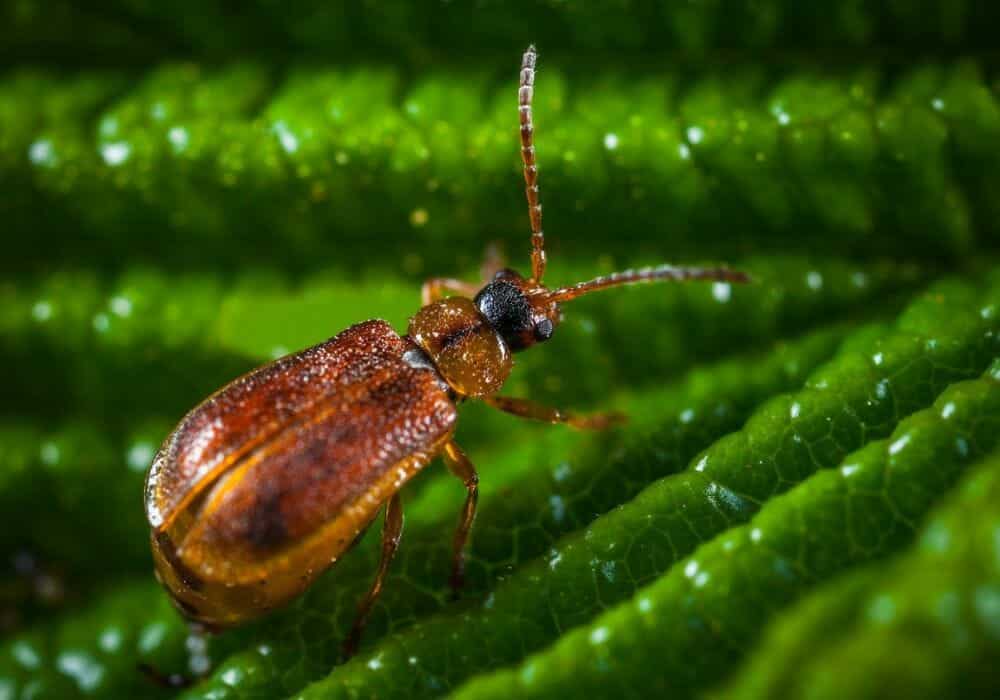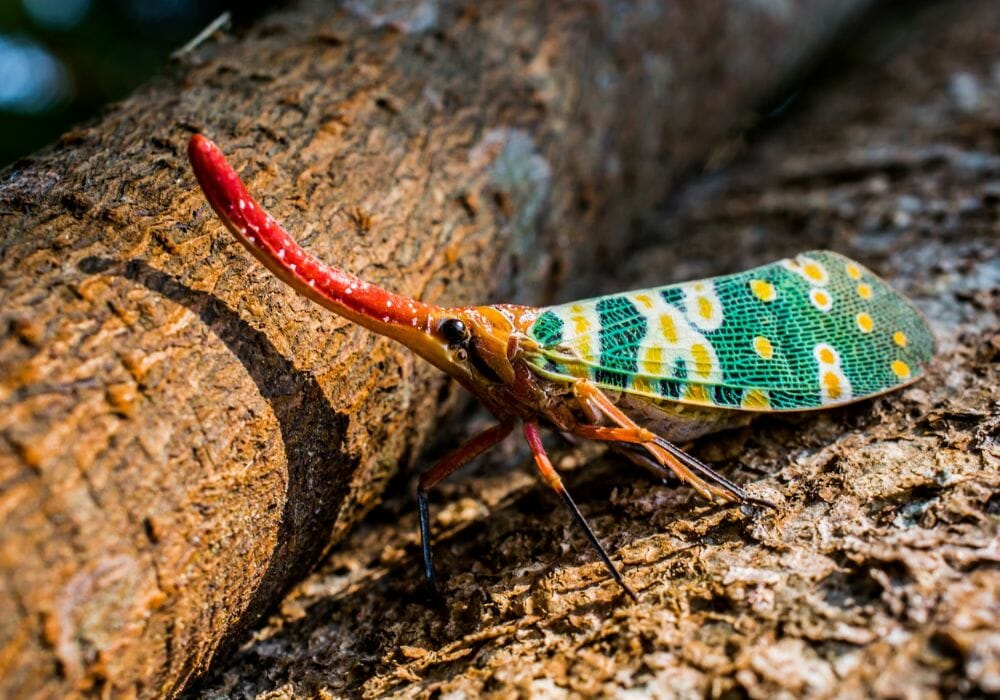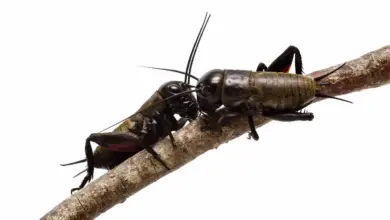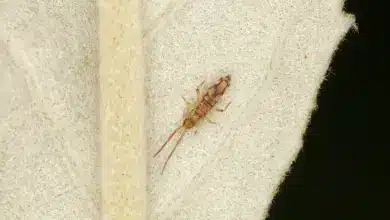What Is The Difference Between Bugs And Insects: Are They The Same?
[modified-date]
[social-share]
When discussing the creepy crawlies, which word do you hear more often: “Insect” or “Bug?” I can bet that the odds are in favor of the latter. But what is the difference between bugs and insects? Since they’re often used interchangeably, both words mean the same, right?
Wrong!
“Insects” and “bugs” are terms that refer to similar but still separate creatures.
Let me teach you the difference between insects and bugs – and how to tell them apart.
Bug vs. Insect
The term “Insect” stands for the whole arthropod class of Insects – six-legged creatures with three body segments and wings (usually). The word “Bug” describes a distinct group of insects.

True bugs belong to the insect order Hemiptera, and their most exceptional physical feature is the needle-like mouthparts they use to suck plant juices.
Check this article out to see the anatomy of an insect.
However, most people use the term “bug” to describe all insects. While this use is essentially incorrect, it is so widespread that it has become widely accepted. Nevertheless, knowing the real difference between insects and bugs is undeniably valuable.
True Bugs vs. Insects
Insects are invertebrates that belong to the phylum of Arthropods. All arthropods have an outer skeleton – exoskeleton – made out of a hard cuticle that acts sort of like a knight’s armor.
However, despite being locked inside such a hard shell, arthropods are quite mobile thanks to their segmented bodies – their defining characteristics.
Insects are arthropods that have three main bodily segments – head, thorax (“back/chest”), and abdomen (“belly”) – six legs and a pair of antennae, such as a honey bee. Also, most insects (except for some primitive types such as silverfish) have two pairs of wings. Even wingless insects such as fleas have evolved from winged ancestors.
In this respect, true bugs (Hemiptera) are typical insects but have some features exclusive to their family.
What Makes A Bug A Bug?
Hempterans have all the characteristics mentioned above but several unique traits as well. Here are the main ones.
- Wings are commonly modified and half-leathery; that is why the name of the family is Hemiptera – meaning “half wing.” However, this is not true for all subgroups, such as Cicadas.
- Modified tube-like mouthparts called proboscis, rostrum, or stylet on the underside of the head evolved for piercing and sucking; that is the most obvious way to tell true bugs from seemingly similar insects such as beetles.
- An incomplete metamorphosis – meaning their young hatch as miniature but underdeveloped, wingless adults. The nymph – a baby true bug – will go through five instars (shedding cycles) before becoming an adult with functional wings.

What Insects Are True Bugs?
If you’ve been asking yourself, “are ants insects or bugs?” or “Is a fly a bug?” or “Is a butterfly a bug?” the answer is – No. These are all insects but do not belong to the family of true bugs – Hemiptera.
Here are some well-known examples of true bugs:
- Stink bugs
- Assassin bugs
- Bed bugs
- Cicadas
- Backswimmers
Because of all the “something-bug” name examples, you may think that all insects that have the word “bug” in their name are true bugs.
Alas, things are a bit murky. For example:
- Ladybugs are not true bugs (Hemiptera), but beetle (Coleoptera).
- June bugs are beetles as well.
- Pill bugs are not bugs either – they’re not even insects but crustaceans!
At this point, you’re probably wondering where all this confusion came from.
Let’s try to figure it out.
Related articles:
- Do Insects Have Hearts: A Bug’s Gotta Have Heart
- Do Insects Have A Nervous System: Do Bugs Feel Pain?.
- Insects with stingers that fly
- Do insects have organs?
- Do insects have tails?
So, Why Do People Call Insects Bugs?
As you’ve just learned, the term “bug” has its place in scientific insect classification. Yes, bugs do exist, and the stinkbug is called that for a good reason.
However, the noun “bug” is not applied to insects only but to other arthropods such as spiders, millipedes, and centipedes. Moreover, even invisible microbes are sometimes called that (stomach bug, anyone?).
Why do people stick the “bug” label on all these small creatures – especially if they find them creepy?
The everyday language we use is only sometimes precise. Some inaccurate names or nouns are based on misconceptions; however, a common occurrence is that the “wrong” names are based on their historical or outdated use.
Similar is the case with the term “bug.”

The First-ever Use Of The Word “bug”
The first identified occasion that the word “bug” was used (then written as “bugge”) was in an old (in fact, the first) English translation of the Bible from the 11th century.
The rather cryptic quote mentions bugge not in the context of an arthropod but as a name for a mythical creature – most likely hobgoblin. However, this has obviously served as a base to start calling an insect that behaves like a malevolent house spirit – a “bug.”
Bed bugs (Cimex sp.) are not so common these days, but they were a menace before people had a way to exterminate them efficiently.
These tiny insects (that, in fact, belong to the family of true bugs) live around mattresses and use their tiny legs to crawl out quietly at night to feed on your blood while you’re sleeping (yikes!).
Remember that all true bugs have pointy, sucking mouthparts? Well, bed bugs are one of the rare members of the group that use them on warm-blooded mammals.
The victims usually don’t notice the insects themselves but wake up with itchy, bloody, rash-like bites. Since this was reminiscent of an act of a supernatural creature – such as a hobgoblin – the word “bug” was employed. And it stuck.
Did you Know?
Note that back in the 17th century, people didn’t grasp that insects were a distinct animal group. It wasn’t until Carl Linnaeus systematized pretty much all living things that insects were grouped into the class Insecta.
Conclusion
Hopefully, you now understand the difference between bugs and insects is. But just in case, here’s a small recap.
From the scientific point of view, insects and bugs are not the same. Bugs – true bugs – are a subgroup of insects – the family called Hemiptera. They are notable for their namesake half-leathery wings and sucking straw-shaped mouthparts.
Still, likely because of the 17th-century battle with blood-sucking bed bugs, people still regularly use the term” bugs” for all species of small, crawly, or fast-moving invertebrates – not only insects.
However, knowing the difference between the two terms makes you look smarter and hopefully helps you cherish the wondrous diversity of the insect species world even more.

Katarina Samurovic is an environmental analyst by education and a freelance scientific writer by choice and passion. She specializes in conservation biology, biodiversity, insect ecology, and trees.
Disclaimer
Earthlife.net does not provide medical advice. We do our best to help users understand the science behind living beings; however, the content in the articles and on the website is not intended to substitute for consultation with a qualified expert. By interacting with the website and/or our email service, you agree to our disclaimer. Remember that you must consult a specialist before using any of the products or advice on the web.





